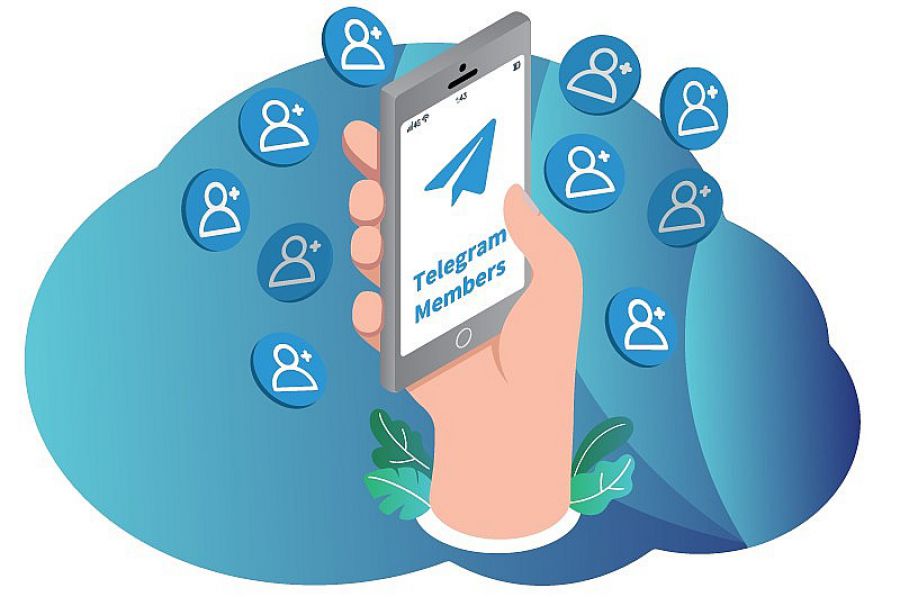Brand Collaborations as an Effective Marketing Tool

Brand collaborations are a strategic tool that becomes increasingly significant and trendy in modern marketing. Within these collaborations, brands join forces to achieve goals that would be difficult or even impossible for a single brand to attain. This type of cooperation offers brands a unique opportunity not only to expand their audience, scale their product offerings, but also to strengthen their market position, increase brand recognition, and ultimately boost profits.
Brand collaborations today are one of the key factors for success. Proper development of a marketing strategy and skill in its implementation can open up new perspectives for you in the modern market.
What is collaboration and why is it important for business?
Collaboration is a temporary or ongoing mutually beneficial partnership between two or more brands with similar values and interests. This marketing tool is utilized by a wide range of entities today, from bloggers, opinion leaders, experts in various fields, to small and medium-sized businesses, and global corporations.
The main objectives achieved through collaborations include:
-
Increasing audience reach. One of the most significant advantages of brand collaborations is the opportunity to expand their audience. Collaborating with other brands allows access to new market segments that may be inaccessible for each brand individually. The greater the reach, the higher the chances of attracting new potential customers and increasing sales.
-
Enhancing brand recognition. Collaborations can significantly impact brand recognition. Partnering with a well-known brand with a good business reputation can capture the attention and interest of not only one's own audience but also the partner's audience. This helps make a strong impression and leave a lasting mark in consumers' memories.
-
Strengthening reputation. A well-thought-out strategy, fruitful work, and joint efforts can help brands strengthen their reputation. When brands are associated with partners who have been in the market for a long time and have earned consumer trust, it can influence the brands themselves. Collaborations contribute to improving the perception of the brand as reliable, open to innovation, and responsive to new trends.
-
Enhancing competitiveness. Collaborations enable brands to offer unique products or services that can set them apart from competitors. Collaborative initiatives have the potential to drive the creation of innovative solutions that resonate with the consumer base.
-
Cost reduction. Partnering with another brand allows for the shared distribution of marketing, research, and development costs, which can save resources and increase the efficiency of both companies.
-
Creating unique stories and content. Collaborations provide an opportunity to create interesting stories and content. This helps brands attract the attention of the media and consumers and increase activity on social media and other platforms.
What types of collaborations exist?
In theory and in practice, various classifications of collaboration types can be found. Let's consider one way to categorize collaborations based on their participant subjects:
1. Person-to-Person Collaboration. This involves cooperation between two or more prominent individuals, such as actors, athletes, bloggers, musicians, and other media figures. The goals can vary widely, from participating in charitable events to creating joint content or products. Such collaborations are often used to increase popularity, expand their audience, or support public and social initiatives. Example: A charity concert featuring Scottish music stars in Glasgow, organized to aid the victims of the South and Southeast Asian tsunami.
2. Person-to-Brand Collaboration. This is a partnership between a media personality and a brand. The media personality can be an actor, athlete, musician, blogger, or any other famous figure. The goals of such collaborations often include enhancing a marketing campaign, creating an association between the personality and the brand, and increasing the brand's recognition and appeal. Example: The collaboration between American hip-hop artist Cardi B and the sportswear and footwear brand Reebok to create a joint footwear collection.
3. Brand-to-Brand Collaboration. This type of collaboration involves cooperation between two or more brands, whether they are in the same market segment or entirely different industries. The objectives typically include joint product manufacturing, creating joint marketing campaigns or promotions to increase profits and attract new customers. It can also contribute to innovative developments and the introduction of such innovations to the market. Example: The collaboration between IKEA and LEGO to create the BYGGLEK collection, aimed at combining storage and play.
Types of Сollaborations: Choosing Yours
There are several types of collaborations that businesses can use to achieve various objectives. Here are some of the most common types:
-
Strategic Partnerships. These are long-term agreements between two or more companies that share common goals and interests. Such partnerships can involve joint research and development, collaborative manufacturing, and combined marketing efforts.
-
Joint Product Development. Brands can collaborate to create joint physical products or services. This allows them to combine their expertise and resources to develop a unique and valuable product for customers.
-
Brand Licensing. One brand may grant another the rights to use its name, logo, technology, or design in its products. This can be mutually beneficial, as the licensing brand receives additional revenue, and the receiving brand can use a popular name or technology.
-
Distribution and Supply. Businesses can collaborate in the distribution and supply of products or components. For example, a product manufacturer may enter into an agreement with a logistics company for efficient product delivery to stores.
-
Marketing Partnerships. Companies can team up to conduct joint marketing promotions and campaigns. This can include collaborative advertising events, contests, promotions, and events.
-
Franchising. This type of collaboration allows a company to expand its business by granting other entrepreneurs the right to use its brand and business model in exchange for fees and compliance with brand standards.
-
Financial and Investment Partnerships. Companies can collaborate in the areas of financing, investments, and capital. This can include joint investments, financial support, and participation in startups.
-
Research and Development. Businesses can combine their research and development efforts to create new products, technologies, and innovations.
Successful cases that we will always remember
There are collaborations that every consumer has likely heard of:
Adidas x Kanye West (Yeezy)
The collaboration between the German brand Adidas and rapper Kanye West led to the creation of the Yeezy collection of sneakers and clothing. These products have become iconic among fashion and footwear enthusiasts, with their limited releases consistently selling out within minutes of being available.
McDonald's x Travis Scott
In recent years, the restaurant business has embraced collaborations with cosmetics brands, fitness studios, and media personalities. Even fast-food chains have not been immune to this trend. In the fall of 2020, McDonald's teamed up with singer, songwriter, and music producer Travis Scott. Visitors could purchase merchandise, a special combo meal, and a figurine of the artist as part of the Happy Meal.
Nike x Off-White
Nike's partnership with the fashion brand Off-White, founded by Virgil Abloh, resulted in a collection of sneakers and clothing that quickly became an icon in street fashion. The unique design and limited releases make the products from this collaboration highly valuable to collectors.
Starbucks x Spotify
The famous coffeehouse chain and the popular music streaming service joined forces in 2015. As a result of this collaboration, in American coffee shops, the music played was selected by the customers through the app, and baristas effectively took on the role of DJs."
From Idea to Implementation: Stages of Creating a Unique Product
Creating a successful collaboration requires a responsible approach, detailed planning, and the coordination of all involved resources. Here are the key stages to go through when developing a collaboration strategy:
-
Defining Goals and Expectations. The first step in the planning stage of collaboration should be answering the question, 'What does our company want to achieve through collaboration?' This could be increasing sales, enhancing audience loyalty, attracting new customers, creating a memorable story, strengthening reputation, and more. It's essential to clarify your goals and expectations from the partnership.
-
Finding the Right Partner. Identify potential partners who share similar goals and audiences. This could be another company, brand, personality, or organization.
-
Compatibility Analysis. Assess how compatible your values and ultimate goals are with the potential partner. The partnership should be mutually beneficial and logical for both parties.
-
Developing a Collaboration Plan. Create a plan that includes specific steps and tasks for each party. Specify what products, services, or events will be created as part of the collaboration.
-
Legal Support. Draft a collaboration agreement that establishes the rights and responsibilities of each party, as well as the terms of cooperation. Such a document should cover intellectual property rights, financial commitments, and the duration of the partnership.
-
Resources and Budget. Determine what resources and budget will be required to execute the collaboration successfully. Ensure you have enough resources to implement the plan effectively.
-
Development and Implementation of Products/Events. At this stage, create the products, services, or events outlined in the collaboration plan. Ensure quality and alignment with the partner's expectations and, subsequently, your audience's.
-
Marketing and Promotion. Develop marketing campaigns and strategies to promote the collaborative products or services. Utilize various channels and resources for maximum visibility.
-
Monitoring and Evaluation. Continuously monitor the progress of the collaboration and measure its success against the predefined goals. Provide feedback and make adjustments if necessary.
-
Conclusion and Evaluation. Upon completion of the collaboration, conduct an analysis of the results. Evaluate whether the initial goals were met and to what extent. Extract lessons for future collaborations.
Secrets of Affiliate Marketing Success
Affiliate marketing can be a powerful tool for expanding your audience and increasing sales. Here are some secrets to success in affiliate marketing:
Choosing the Right Partners. One of the most critical aspects of successful affiliate marketing is selecting the right partners. Look for partners whose audience aligns with your target group, and whose values and goals align with yours.
Clear and Mutually Beneficial Goals. Clearly define the goals of your collaboration and ensure that they are mutually beneficial. The partnership should bring benefits to all participants.
Coordinated Strategies and Plans. Develop joint strategies and action plans that define how each party will interact within the partnership.
Quality Content. Create high-quality content that appeals to both your audience and your partner's audience. This can include articles, videos, banners, billboards, and other materials.
Effective Tracking and Analysis. Use analytics tools to track the results of your collaboration. This allows you to measure success and make adjustments if something isn't working.
Transparent Relationships. Build honest and trustworthy relationships with your partners. Discuss expectations and cooperation rules from the outset.
Rewards and Motivation. Fairly reward partners for their efforts. This could be through commissions, a percentage of sales, or other bonuses. Motivate partners to achieve significant results in your joint activities.
Support and Feedback. Provide support to partners and offer them necessary resources. Listen to their feedback and consider it for improving your collaboration.
Continuous Updating and Improvement. Affiliate marketing is a dynamic process. Continuously update and improve strategies and tactics to remain competitive.
Long-Term Collaboration. Keep in mind that affiliate marketing may be more successful in the long term. Strive for stable relationships with partners and ongoing collaboration.
Affiliate marketing is a strategy that can yield significant results but requires careful planning and management. With the right partners and approaches, it can become a powerful tool for growing your business.
Potential Risks and Challenges
Misalignment of Values and Goals. If brands have different values and goals that are not discussed before entering into collaboration, it can lead to conflicts and misunderstandings. Partnerships should be built on shared objectives and principles of interaction.
Loss of Authenticity. Inability to maintain authenticity and uniqueness within the collaboration can negatively impact the reputation of both brands.
Conflict of Interests. Conflicts of interest between brands, especially regarding profit and resource distribution, can lead to dissatisfaction and complicate the collaboration.
Partner's Poor Reputation. If one partner faces reputation issues or scandals, it can have a negative effect on the other brand collaborating with them.
Management and Coordination Challenges. Collaboration between brands requires additional management and coordination, which can be challenging, especially if companies are in different time zones or countries.
Insufficient Funding. Inadequate funding for joint projects can lead to their failure.
Market Condition Changes. Economic and market factors can influence the success of the partnership. For instance, changes in the economic situation or increased competition can affect the demand for the brands' products and services.
Legal Risks. Improper contract and document handling, intellectual property rights violations, and legal issues can lead to problems and harm the brands.
Marketing and Promotion Difficulties. Challenges in developing and implementing joint marketing campaigns can arise, particularly if brands have different views on marketing strategy or change their approach during the execution of the previously agreed-upon plan.
Imbalance in Contributions and Efforts. If one partner invests more resources and effort than the other, it can lead to dissatisfaction and an imbalance in the collaboration.
Conclusion
Collaborations within the partnership of two or more brands, businesses, thought leaders, and celebrities can be an effective tool for achieving set objectives and goals, promoting developed products and services in the market. It is important to choose the right partner, define the goals and desired outcomes from the outset, assess all potential risks, and propose measures to minimize them. By adhering to a well-developed strategy and following the terms outlined in the collaboration's accompanying documents, you can undoubtedly achieve success!
Useful article on a similar topic:
- Marketing Strategy: How to Develop an Effective + Examples.
Try Popsters Trial plan to get content activity statistics of any pages for a next 7 days for free
Try for free















